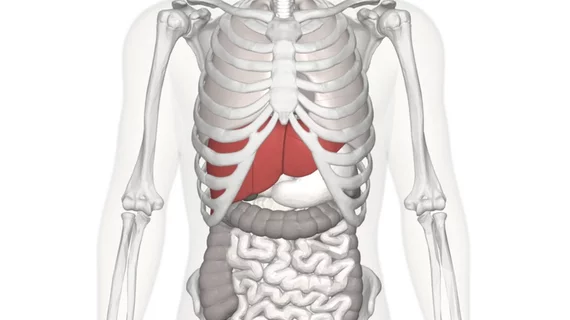‘Game changer’: MRI contrast agent targets new liver cancer biomarker
Researchers from Georgia believe their new MRI contrast material can overcome the barriers to early cancer diagnosis and change the way clinicians approach multiple forms of the disease.
The novel agent, described Feb. 7 in Science Advances, binds to specific proteins and helped the team identify a new biomarker for the detection of liver metastases. It may eventually lead to more individualized care and less risk to patients with different cancer profiles.
"This is a game changer. It has the possibility to have many more applications, really for any type of cancer," Jenny Yang, professor at Georgia State University, said in a statement. "We are already applying it to 10 different types of cancer in the lab."
MRI is the preferred modality for analyzing and characterizing liver malignancy. And while it’s good at providing accurate morphological, anatomical and functional tumor information, it runs into challenges in lesions smaller than 1 centimeter. Yang also explained that many contrasts can’t distinguish the various growth patterns of certain liver metastases.
To address this “pressing need,” the researchers created their agent to target the chemokine receptor 4 (CXCR4). It is overexpressed in many common organs targeted by cancer, such as the liver, they noted. And it can pick out miniscule cancer cells on multi-color scans using a new imaging technology known as precision MRI.
Yang and co-authors from Emory University tested and validated the CXCR4 imaging biomarker in uveal melanoma samples taken from human patients, in vitro cell lines and mouse models. It proved much more effective than traditional agents at targeting signs of cancer, even in “micro-metastases” as small as 0.1 millimeters.
"Diagnostic testing using this contrast agent can not only identify the presence of disease but differentiate the stages of disease with high sensitivity and accuracy,” Yang said. “That's the beauty of this work."
The tests have been so positive that the contrast agent is being “fast-tracked” by the Food and Drug Administration in an effort to test its accuracy in human clinical trials, noted Yang, whose goals for the future are sky-high.
"We have been using the same contrast agents for 30 years with few breakthroughs," Yang said. "I think this is my biggest scientific contribution. And I hope there are many more to come."
The authors’ work was funded by the National Cancer Institute.

